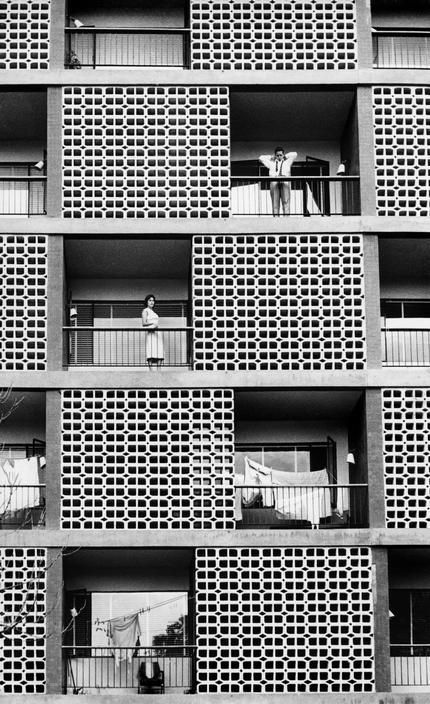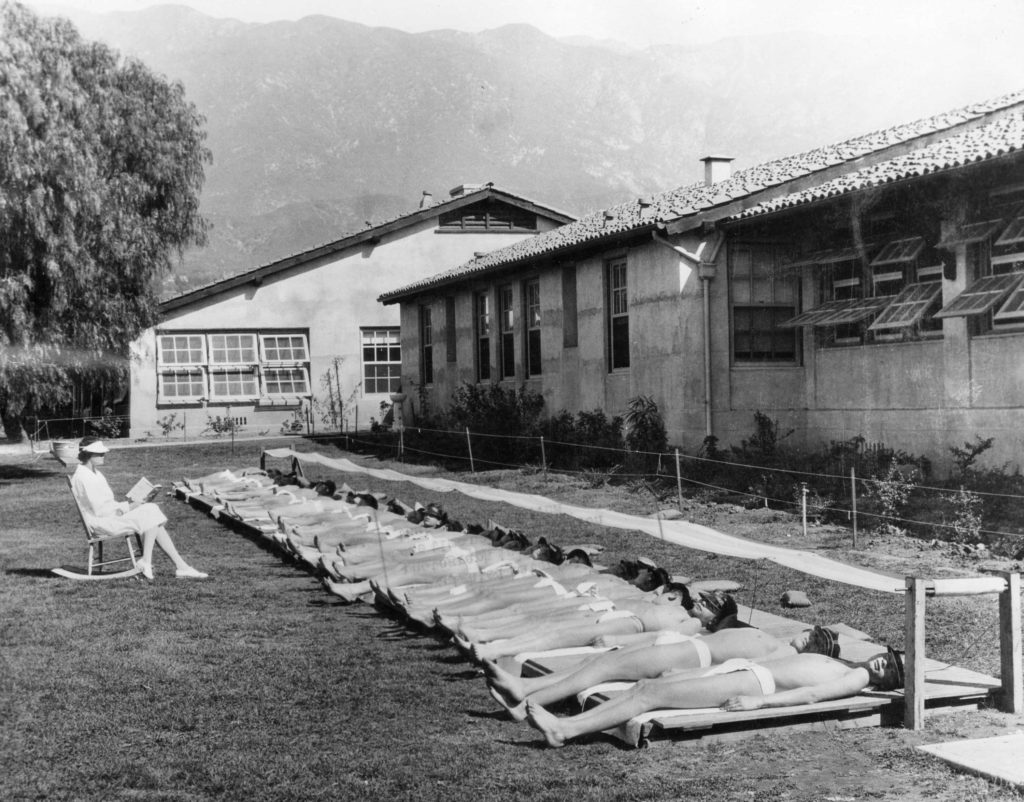
A 1908 illustration from the Virginia Health Bulletin shows urban diseases threatening the bucolic conditions of suburban life. Courtesy: the Virginia Health Bulletin.
The Covid-19 pandemic has raised many challenging questions for planners, architects, and policymakers around the issue of urban density. While researchers have spent decades making the case for density, there are worries that the threat posed by the Covid-19 virus will cause cities to be seen as sites of risk and for densification to fall out of favor. Indeed, many efforts to control the spread of virus have explicitly focused on strategies of “de-densification.” This includes at Harvard, where undergraduates were sent home to reduce the density of people on campus.
Many planners, in particular, have expressed worry that the focus on de-densification might mean that people are less willing to embrace density once the pandemic is over. This is of concern since—as the implications of climate change have become apparent and cities are forced to address the energy and environmental costs associated with diffuse development and sprawl—planners have viewed densification as a key strategy toward achieving sustainability goals. Despite worries that momentum behind compact cities, smart growth, and density writ large might be lost due to the pandemic, it has been difficult to predict the potential impact because the relationship between hygiene concerns and density perceptions is poorly understood and has been the subject of very little research.
In late medieval times, wealthy residents of European cities often retreated from cities during plagues. Following a similar pattern, in the present Covid-19 pandemic, news stories have reported instances of the wealthy fleeing cities for rural holiday properties or second homes.
On the public perception of cities as sites of squalor, and suburban environments as bucolic and safe
Prior to the pandemic, I was intrigued by the relative lack of empirical, contemporary research on the relationship between hygiene and attitudes toward density. This gap was particularly interesting because there is a substantial body of fascinating tangential evidence that suggests people’s attitudes to urban density might be influenced by hygiene concerns. Historically, for example, dense settlements have been associated with increased risk of disease. Scholars have argued that virtually all human infectious diseases due to microorganisms arose out of the emergence of urbanism (1).
As a result of the association between dense urban settlements and disease transmission—a phenomenon referred to in public health as the “urban penalty”—dispersal from cities has sometimes been viewed as an effective response to infectious disease outbreaks. In late medieval times, wealthy residents of European cities often retreated from cities during plagues (2,3). Similarly, students and faculty at Oxford University moved to rural sites during times of outbreak. The connection between perceptions of hygiene, health, and urban density can also be seen in late 19th- and early 20th-century public health publications (such as in the image accompanying this article), which often depicted cities as sites of squalor and suburban environments as bucolic and safe (4). Following a similar pattern, in the present Covid-19 pandemic, news stories have reported instances of the wealthy fleeing cities for rural holiday properties or second homes (5). From a biomedical perspective, studies have shown that population density is positively associated with transmission rates for diseases transmitted via fecal-oral and respiratory routes, including influenza (6,7).
In the face of the historical and contemporary evidence that cities may be viewed as sites of increased risk from infectious illnesses, are people’s perceptions of density actually influenced by hygiene concerns? The seeming absence of any direct research into this question led me to design an experiment to explore this topic. The experiment drew on research in psychology and related behavioral sciences that has argued that “most of a person’s everyday life is determined not by their conscious intentions but by mental processes…that operate outside of conscious awareness. (8)”
One aspect of the extensive research on the subconscious factors shaping perceptions has concentrated on “priming”—an effect in which exposure to one stimulus affects response to another. Priming studies have shown, for example, that thinking about professors improves performance in Trivial Pursuit and that reading words associated with the elderly, such as “Florida,” is associated with people walking more slowly. In another study, individuals who were exposed to a reminder, or “prime,” related to physical cleansing, such as a bottle of hand sanitizer or a request to use hand wipes, reported being more politically and morally conservative (9). Priming studies have become nearly ubiquitous in social psychology and related behavioral fields, but they have seldom examined urban contexts and have not addressed the issue of density. My experiment sought to address this gap by examining if perceptions of density were, like many other social, political, and moral attitudes, influenceable via priming.
The experiment took place at the Harvard Decision Science Laboratory, a facility that provides space for behavioral experiments. It involved 437 participants participating in two visual preference surveys and two narrative scenarios. Participants were randomly assigned to four groups. Those in the control group viewed and scored images—from the Lincoln Institute’s Visualizing Density Database—of different density settings. They also answered questions regarding a hypothetical density increase in their neighborhood. Participants in the other groups, who were placed in three separate rooms, undertook these same tasks, but were exposed to three different hygiene-related primes. One group was asked to hand sanitize before and after answering the questions due to risk from colds and flu; one group found banana peels left in their workspace and had to dispose of them in the trash before answering the questions; and the last group was exposed to fart spray (yes, fart spray!) that had been introduced into the room at the start of the session. Primes of each of these kinds have been shown to influence political and social attitudes and moral judgments and the goal was to see if perceptions of density were similarly malleable.
The study’s findings showed no consistent influence of hygiene priming on density perceptions. This is surprising since the vast body of priming research shows that virtually all perceptions and attitudes tested thus far can apparently be primed. Had density perceptions been found to be similarly malleable, it might have opened up a range of subconscious interventions to modify these perceptions. While this may sound far-fetched or from the realm of science fiction, governments and private companies have already begun to undertake such efforts, although not yet in earnest around urban planning.
There are many ways in which priming-related research has already been practically, and sometimes worryingly, deployed. In public policy more broadly, for example, many governments have sought to deploy “nudging” to influence citizen behavior. In this vein, the government of the United Kingdom has established a Behavioral Insights Team, or “Nudge Unit,” that seeks to use behavioral research to “enable people to make ‘better choices for themselves.’” (10) In the private sector, priming-related research—including such studies as one arguing that the smell of chocolate motivates people to purchase more books—has led companies to develop scent technologies that can distribute over 300 different smells into shops to influence customer perceptions and purchasing behavior.
Unlike the vast majority of perceptions addressed in the priming literature, the experiment described here suggests that density perceptions are relatively impervious to hygiene priming. This finding has considerable planning implications. First, it may go some way toward assuaging planners’ and designers’ concerns that the current Covid-19 pandemic will influence people’s attitudes away from density. The study showed that, while people have varying density preferences, these are not significantly altered by exposure to hygiene cues. While the results suggest that the pandemic may not affect density preferences, they do help explain why it also so hard for planners and designers to introduce interventions that change urban densities.
The experiment indicates that density preferences may be more stable than many of the other perceptions studied so far and, correspondingly, efforts to change densities will likely have to be accompanied by extensive efforts to win over skeptical publics. Beyond considering the specific issues of hygiene and density, the study described here also argues for much greater attention to the behavioral dimensions of planning and design and for expanding the range of methods, including greater use of experiments, in urban planning research.
Michael Hooper is Associate Professor of Urban Planning at the Harvard Graduate School of Design. The results of his study “Flatulence, Filth, and Urban Form: Do Primes for Hygiene Influence Perceptions of Urban Density?” were published in the Journal of Planning Education and Research.
(1) James C. Scott, Against the Grain: A Deep History of the Earliest States (New Haven, CT: Yale University Press, 2017).
(2) Ann G. Carmichael, Plague and the Poor in Renaissance Florence (Cambridge: Cambridge University Press, 1986).
(3) William J Courtenay, “The Effect of the Black Death on English Higher Education,” Speculum 55, no. 4 (October 1980): 696-714.
(4) Virginia Department of Health, “Scarlet fever, diphtheria, and disinfection,” Virginia Health Bulletin 1, no. 6 (1908): 216.
(5) Amanda Holpuch, “Luxury resorts face coronavirus crisis as the 1% flee cities for holiday hideaways,” The Guardian, April 4, 2020.
(6) Alirol, E., L. Getaz, B. Stoll, F. Chappuis, and L. Loutan. 2011. “Urbanisation and Infectious Diseases in a Globalized World.” The Lancet Infectious Diseases 11 (2): 131-141.
(7) Xiao, H., X. Lin, G. Chowell, C. Huang, L. Gao, B. Chen, Z. Wang, L. Zhou, X. He, H. Liu, X. Zhang, and H. Yang. 2014. “Urban Structure and the Risk of Influenza A (H1N1) Outbreaks in Municipal Districts.” Chinese Science Bulletin 59 (5-6): 554-562.
(8) John A. Bargh and Tanya L. Chartrand, “The Unbearable Automaticity of Being,” American Psychologist 54, no. 7 (July 1999): 462–79.
(9) Erik G. Helzer and David A. Pizarro, “Dirty Liberals! Reminders of Physical Cleanliness Influence Moral and Political Attitudes,” Psychological Science 22, no. 4 (March 2011): 517-522.
(10) United Kingdom Cabinet Office. 2018. “Behavioural Insights Team.” Accessed June 15, 2018. https://www.behaviouralinsights.co.uk/.






